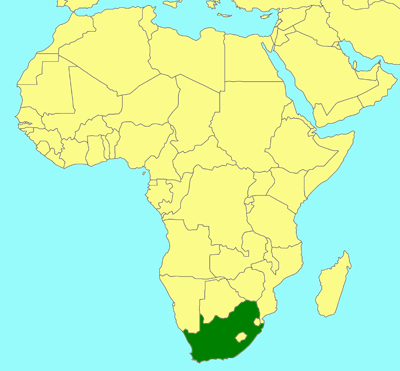|
Paratype male |
|
 |
 |
|
Distribution
|

South Africa (Western Cape). |
Biology
|
Host: unknown. |
Etymology
|
Dedicated to Archbishop Desmond Tutu, one of four South
Africans to have received the Nobel Peace prize, in acknowledgment of
his life-long fight for Human rights. |
Diagnosis
|
Black and bright yellow overall; face and clypeus
punctate, remainder of head coriaceous; clypeus transverse; flagellum
with 27–34 flagellomeres; mesosoma moderately to densely punctate;
propodeum rugulose, carination complete but area superomedia often not
laterally delimited beyond costula; hind wing with 1/Cu & cua straight,
distal abscissa of Cu absent; tergites1–3 aciculate, following finely
coriaceous. CT 2.0; ML 0.7; IO 2.0; OO 1.1; Fl1 4.3; Fl15 1.4; Fl26 1.2;
OT1.9.
Differential diagnosis. This species is readily distinguishable
from C. madagascarienscis based on the striking interspersed
black and yellow coloration (Rousse & van Noort., 2014). |
References
|
Rousse
P & van Noort S. 2014.
Belesica madiba and Cremastus
tutui (Ichneumonidae: Cremastinae), two entomological gems from
South Africa. Zootaxa 3795: 161–173.
http://dx.doi.org/10.11646/zootaxa.3795.2.5
|
Credits
|
Photographs
by Pascal Rousse © Iziko Museums of South Africa. Map illustration ©
Simon van Noort (Iziko Museums of South Africa). |
| |
Next
genus: Eucremastus
Next
species:
Eucremastus
villiersi |
|